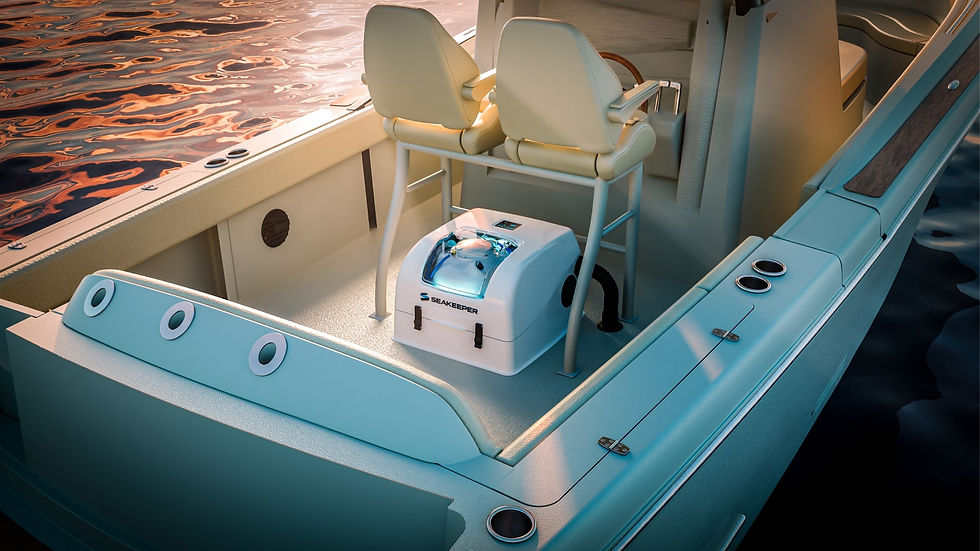How Good are Today's Electronic Boating Charts?
- Bill Jennings

- Jul 25, 2023
- 3 min read
Updated: Aug 1, 2023

Do you use paper charts for navigation? Do you know a boater who does? If your answer to both of these questions was "No," I am not surprised. With today's amazing electronic navigation options, there seems to be little need for the clumsy and fragile navigation product that our grandfather used. But even today, to ensure reliable navigation, ships carry both paper and electronic charts. The paper charts are usually kept on a dedicated table and the officer in charge of navigation marks the ship's precise track on the paper chart with a marker pen. This not only keeps an accurate look at where they are, but also a permanent record of where they have been. This process will seem like total overkill for a pleasure boater on a medium sized lake, and for this reason electronic charts have become the most common method for reading surrounding water and directions. All electronic navigational aids today are grouped under the heading "Electronic Chart Display and Infrastructure Systems," or ECDIS. Big name manufacturers such as Furuno, Garmin, Navico, Raymarine, Samsung, and new ones like 'TZ' are recognized by most boaters. Many have at least one of their products in their boat. Nowadays, you have undoubtedly enjoyed the benefits of GPS mapping on your cell phone, or in your car. Using a DCDIS unit in your boat is basically the same as using the one in your car -- but don't rely on a land GPS to provide nautical information. Given the advanced capabilities of electronic navigation equipment, the question for boaters with larger pleasure boats, and those who plan on cruising, is whether ECDIS is good enough to effectively replace paper charts. ECDIS products have always had two concerns. Firstly, they need a reliable source of electricity. Secondly, they can fail. I recall with horror the number of times with early GPS units, how I would be heading through some tricky navigation area at night only to have the screen go blank. But I wasn't piloting a ship so I could always stop and figure it out. Not every boater has that opportunity. But despite those early risks, it is relevant today to look at the advantages that ECDIS products offer over the old paper charts -- and there are many. ECIDS make it easier to plan your trips using way points for an autopilot. Once your route is known, you can tailor your chart to your trip requirements. The information you receive on an ECDIS is processed and displayed in real-time. Most information for electronic equipment today is sold on a subscription system that includes automatic updates. These updates reach your vessel's equipment in various ways depending on the service provider and your onboard communication facilities. You can also order different levels of data recording for your units for future reference. That can certainly make your boating trips easier to prepare for.
There are even more important advantages of ECDIS over paper. You are able to see all necessary navigational information at a single glance. You can also zoom in and out of specific chart areas in order to better follow a safe passage. Most systems include alarms and/or written warnings to tell you about potential dangers ahead. For example, when these alarms are pre-set to warn you of a shift in boat position, you can get get a better sleep when at anchor.
Updating your estimated arrival times is also quick and easy. If a different orientation to N, S, E, and W is desired, an electronic chart will accommodate you. And very importantly, additional navigational equipment such as the Radar, Gyro, Echo, ARPA and Automatic Vessel Identification, can be overlaid and interfaced on a digital screen. The conclusion here is that for most of today's small boat navigational requirements electronic navigation is the way to go. Incidentally, you may hear boaters refer to two different electronic chart types - 'raster' charts and 'vector' charts. This is a topic in itself. Perhaps the most simple explanation is that Raster charts (RNCs) are a direct copy or a scan of paper charts, including all information shown. Vector charts (ENCs) are computer-generated charts with details that can be turned on or off depending on your needs. Both chart types offer the ability to "zoom in" where more detail is needed. The decision as to which ECDIS manufacturer to choose should be made on the basis of which supplied charts best cover your area. Next, you'll want to consider what product features are important for your application and your boating lifestyle. Don't pay for features that you will never use. Beyond that, price is the next big consideration, because within the major brands there are just too many great features to come up with a definitive manufacturer recommendation. ECDIS products today mean there is no good reason to get lost.



















Comments